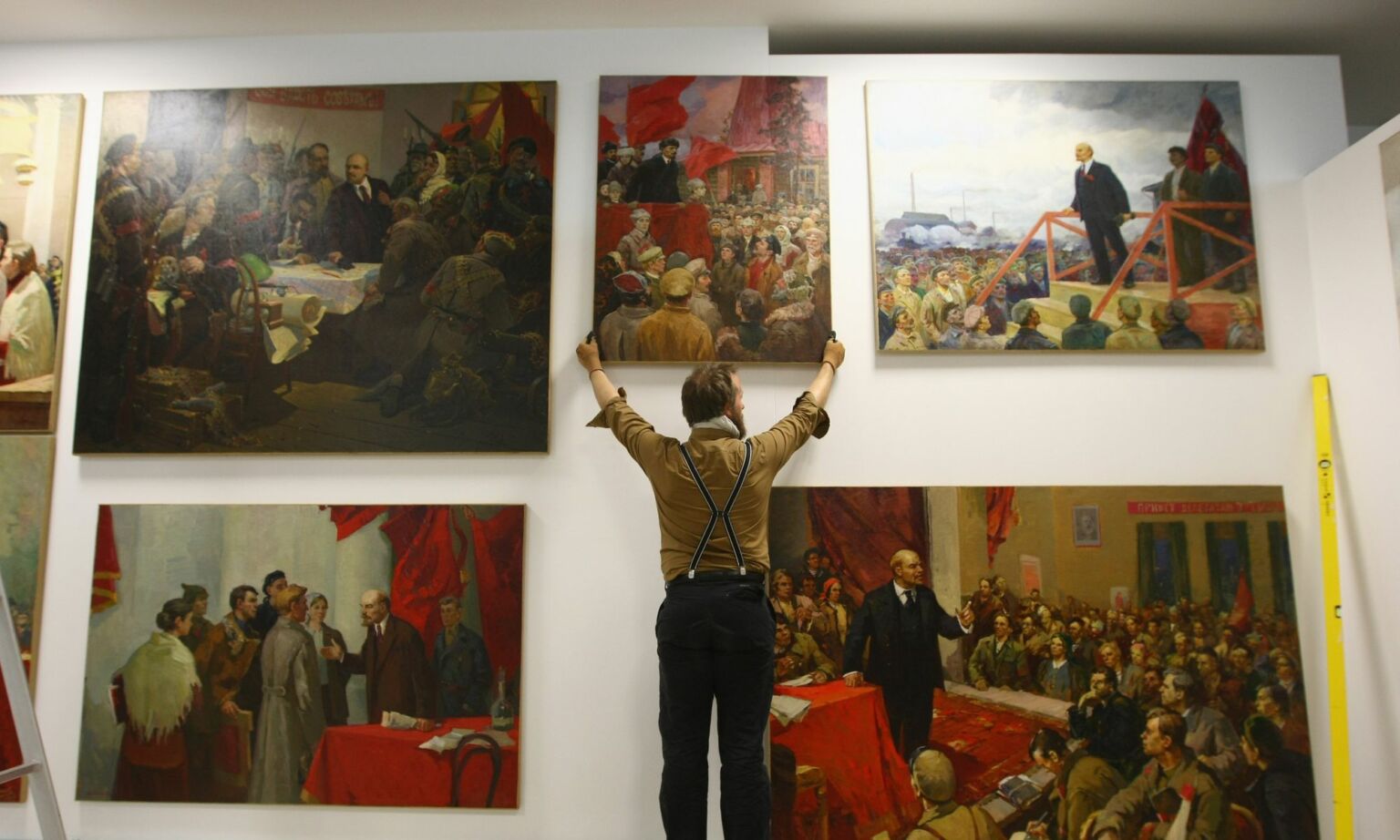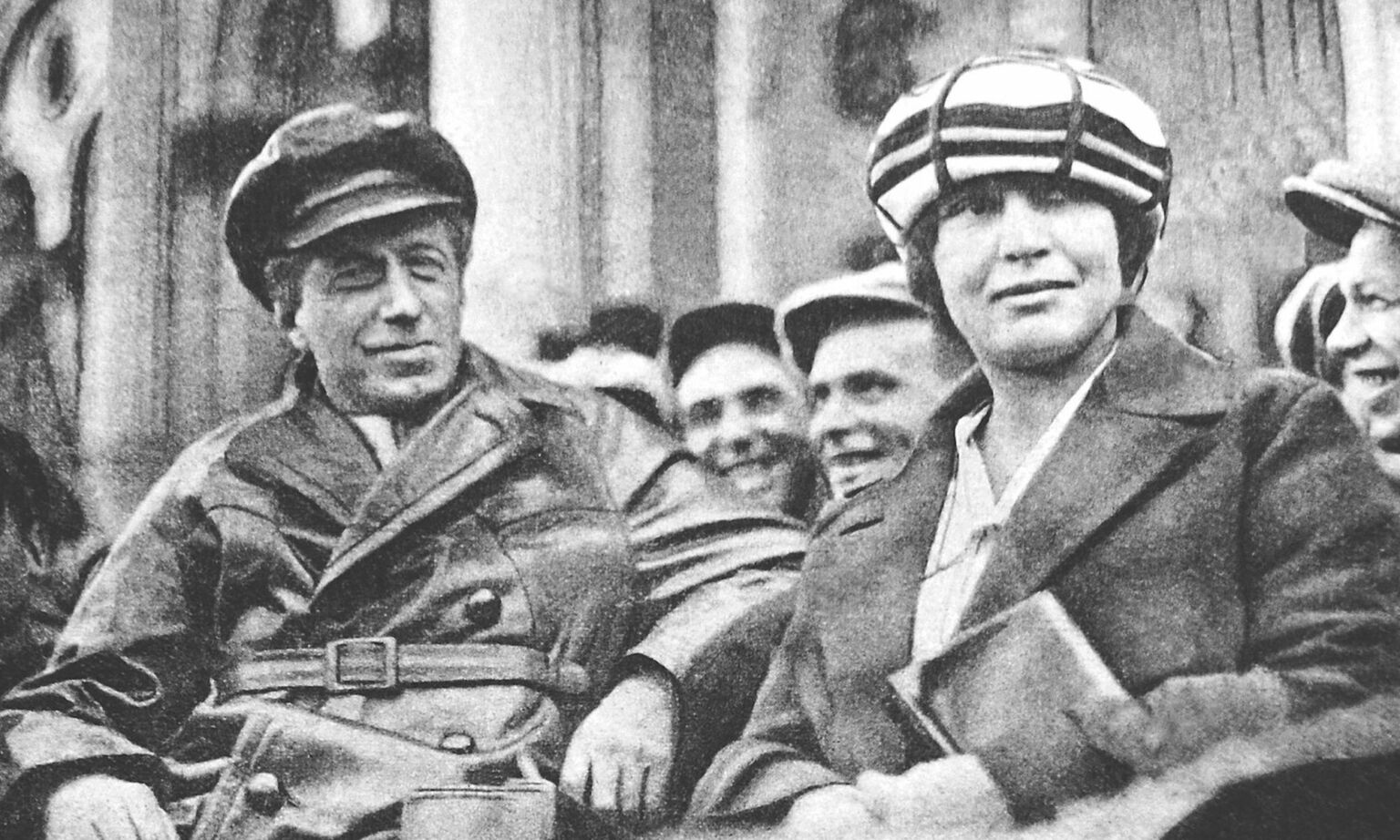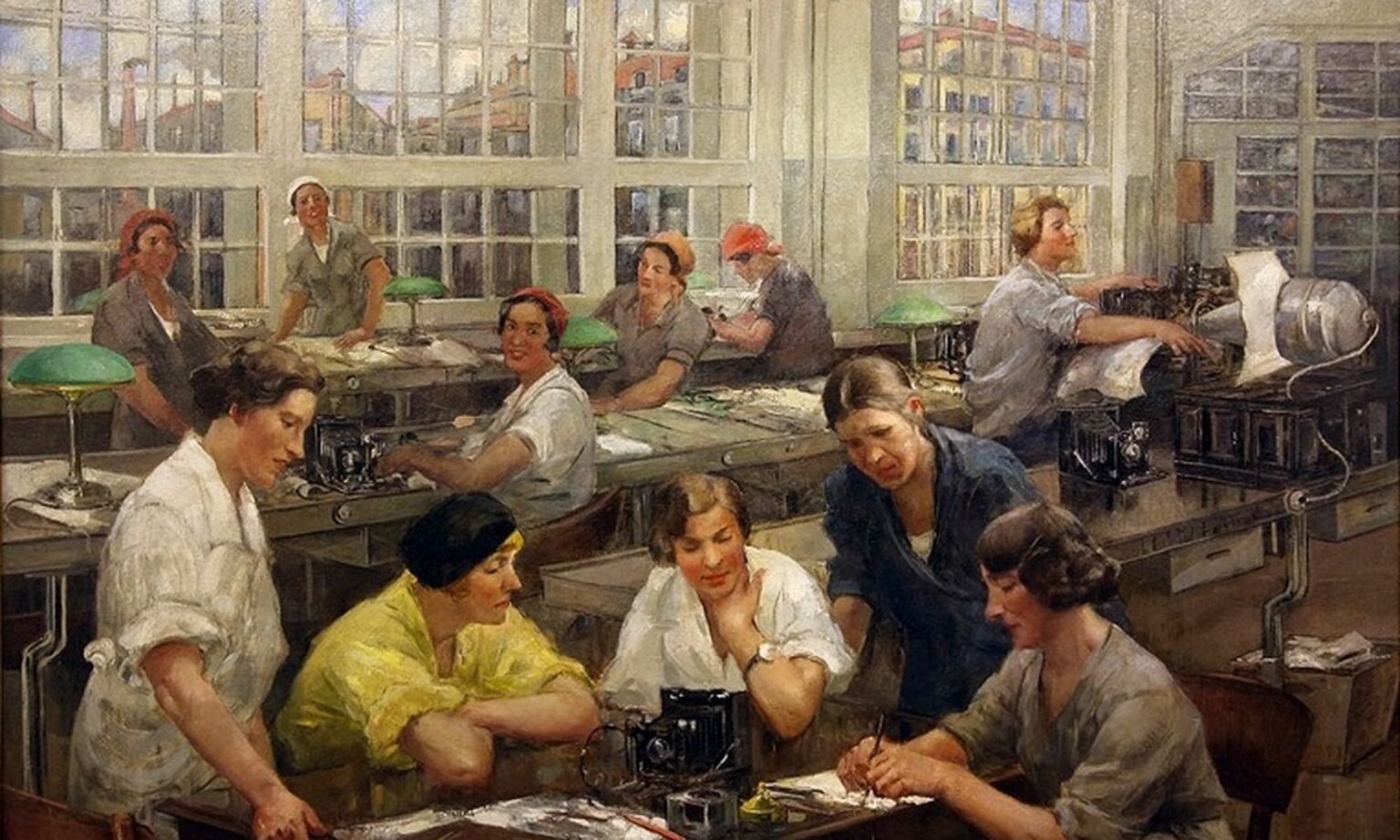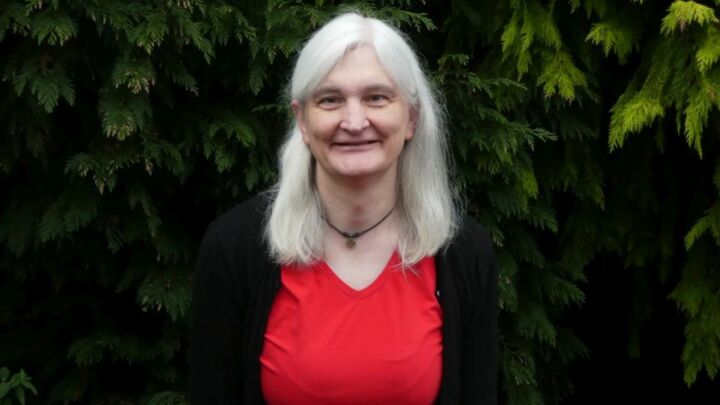
Long-read
When culture becomes propaganda
Stalinism showed us the danger of subordinating art to the demands of ideology.
Stalin’s Russia was the prototype of the modern totalitarian state. Every aspect of societal life was subject to its demands, and that included arts and culture. People were censored, arrested, tortured, jailed and executed for what they wrote or said or thought. Observable truth was sacrificed at the altar of political truth. As Stalin’s state prosecutor, Andrey Vyshinsky, once remarked: ‘We have our own reality.’
The extent of the Stalinist state’s power was the inspiration for Orwell’s Nineteen Eighty-Four, and its methodical brutality was chronicled in Solzhenitsyn’s The Gulag Archipelago. Public and private life was policed, history was manipulated and selectively erased, and the arts were reduced to ‘cultural production’.
Today, the threats to artistic freedom are not mainly driven by top-down oppression. And writers are not being disappeared. But there is nonetheless a growing cultural conformism, in which artists or writers who fail to promote woke values are shamed and sidelined. This is bad for freedom and for culture, as Stalinist Russia shows – for there we have an object lesson in the damage done to culture when it is subordinated to the promotion of ideology.
Artistic freedom under the Bolsheviks
The Bolsheviks did not set out to control ‘cultural production’. When they seized power in October 1917, they did not have a prepared policy on governing the arts. Their approach evolved in the early years of the revolution, largely as a pragmatic response to their uncertain hold on power.
Lenin, for instance, felt that artists served ‘bourgeois interests’, but he also appreciated that writers in particular held great prestige in Russian society. As a result, theatres were nationalised, as were bookshops, libraries and the print industry – which produced many striking posters during the Russian Civil War (1917-23).
Yet despite the state’s involvement in the arts, they still enjoyed a degree of autonomy during the late 1910s and 1920s. Experimental art and literature, in particular, flourished.
In Petrograd, November 1917, over a hundred artists were invited to a meeting to discuss the relationship between art and Communism. Among the few who attended was prominent theatre director Vsevolod Meyerhold, who was given a senior position at the Petrograd Theatre. Meyerhold developed an acting technique known as ‘biomechanics’ and was initially popular with the Soviet authorities. In 1921, Meyerhold was appointed head of the State Higher Theatre Workshops in Moscow.
These were culturally vibrant times. The revolution had inspired a pioneering approach to theatre-making and a ‘craze for theatricalisation’ among audiences, as one contemporary account puts it. There were reports of villages with as many as five theatres. People who had never been to the theatre before had fewer pre-conceptions as to what to expect, so they were more willing to tolerate experimentation. Much of the new theatre saw its function as informing people about the new political situation – an approach which gave rise to the ‘living newspaper’, in which actors dramatised current events and proposed social action.

There were good reasons for this level of artistic freedom under the Bolsheviks. Until the middle of 1923, the Bolsheviks had a civil war to win and had little time to oversee the arts. Meyerhold and others were left free to experiment. One method that emerged at this time was the breaking down of the division between actor and audience. Mass spectacle events were produced, like Nikolai Evreinov’s The Storming of the Winter Palace (1920), which involved 10,000 performers and an audience of 100,000. Actors would walk out of character to introduce the play and then return. Performers would be planted in the audience to bring them into the narrative, and spectators would be turned into actors.
This brief period of experimentation was to have an international influence. In 1930s Manchester, for instance, Ewan MacColl and Joan Littlewood absorbed these ideas and applied them to their work at the Theatre Union. In 1940, they were both arrested when police stopped a performance of a living-newspaper piece, called The Last Edition. One can still see the influence of Soviet modernism in Littlewood’s 1963 classic, Oh What a Lovely War – an experimental musical, which utilised an electronic newspaper behind the actors who invited the audience to join them in singing music-hall songs.
Russian futurism also flourished during the 1917-23 period. The broader futurist movement had its origins in Italy in the early 20th century. It was characterised by its embrace of technology, youth and violence, and its repudiation of the art of the past. But whereas the Italian futurists leaned into fascism, the Russian futurists, with Vladimir Mayakovsky at their head, welcomed the October Revolution. Mayakovsky admired Lenin and knew him personally. He set up a futurist organisation affiliated to the Communist Party and effectively became part of the Soviet establishment, regularly contributing to the state newspaper, Izvestia. His most famous work was his epic poem, Vladimir Ilyich Lenin, published after Lenin’s death in 1924.
Perhaps, if Stalin had not taken over the Communist Party, the degree of artistic freedom enjoyed in the early stages of the revolution might have lasted. Indeed, in 1922, while gravely ill, Lenin had dictated a testament recommending that Trotsky rather than Stalin should lead the party after his death. Trotsky, an architect of the October Revolution, had a far more liberal approach to governing the arts than Stalin. ‘Art must make its own way and by its own means’, he wrote in ‘Communist Policy toward Art’ (1923). ‘The Marxian methods are not the same as the artistic… The domain of art is not one in which the party is called upon to command.’
The tyranny of socialist realism
But of course it was not Trotsky who succeeded Lenin. Instead, Stalin took advantage of Lenin’s illness to promote his own supporters within the party, which enabled him to secure the general secretaryship on Lenin’s death in 1924. He then began moving against political opposition inside the party’s central committee, exiling Trotsky in 1928.
That same year the party decreed its right to exercise guidance over literature. Libraries were purged of books deemed to be harmful, a measure that presaged Stalin’s totalitarian ambitions. In 1930, a new calendar was introduced which abolished Sundays so rest days could be rotated and production could be continuous. It also disrupted Sunday worship at a time when the church faced wider persecution. Icons were burned and replaced with portraits of Stalin, church bells were melted down and monasteries were demolished or converted into prison camps. Scores of churches were destroyed in Moscow alone. A new orthodoxy was instilled through everything, from schools where children learned to chant thanks to Comrade Stalin to circus clowns whose performances had to be ideologically acceptable.
The effect was culturally suffocating. Fringe arts movements that had flourished in the early days of Communism, such as futurism, required freedom of expression and a degree of free enterprise to survive. By the end of the 1920s, the Soviet government had ended both and had begun to promote a style of art and literature that was termed by the Union of Soviet Writers as ‘socialist realism’. The party laid out the permitted form of artistic expression. Socialist art had to be ‘proletarian’, relevant to workers’ lives and comprehensible to all. It had to be recognisable as typical, depicting scenes of everyday life. It had to be clearly partisan in its support of the party’s aims, with the party always portrayed favourably. And it had to be invariably optimistic, always glorifying the present. Stalin demanded that artists be ‘engineers of the soul’.
In truth, socialist-realist art was anything but realistic. People were presented as binary, wholly good or bad. It leaned in the direction of classical rather than realistic visual art, idealising physicality, youthfulness, sunlight, not to mention industrial landscapes. Creativity and artistic integrity was far less important than promoting party doctrine.
The Union of Soviet Writers ensured that the party controlled literature. Being excluded from, or excluding oneself from the union, meant a ban on being published. It was automatically assumed writers who claimed to have no political function had counter-revolutionary intentions. The result was a literature that was indistinguishable from propaganda. Novels extolling Soviet industry were written, such as Time, Forward! (1932), about two workers competing with each other to beat a concrete-pouring record. Likewise, visual artists celebrated industrial achievements.
At its worst, socialist realism was turgid and cliché-ridden. Its heroes were chaste, patriotic and loyal. It often featured leaders of party and state – mostly Stalin. This was particularly the pattern after the Second World War, when the party’s chief of ideology and culture was Andrei Zhdanov. Socialist realism was applied to classical music and a Union of Soviet Composers was established in 1932. Composers were expected to abandon Western progressivism in favour of simple, traditional Russian and Soviet melodies. Artistic expression that didn’t fit the description of socialist realism was usually denounced as ‘formalist’.

Cultural oppression was of course only one aspect of a wider social and political oppression that intensified from the early 1930s onwards. Stalin’s paranoia culminated in the Great Purge, which cost the lives of an estimated one million Soviet citizens between 1936 and 1938. Every corner of Russian society was terrorised. Officers from the NKVD (the secret police) were arrested by colleagues, the most loyal of party officials tortured to confess. It was not considered worthwhile putting names on the doors of journalists at state newspaper Izvestia, since their tenure was so brief. ‘Everyone is a traitor’, wrote an NKVD officer, ‘until he proves the contrary by exposing someone else’. Trials were a foregone conclusion, and evidence mattered less than accusation because there were quotas to be fulfilled.
People kept a suitcase packed and slept in their clothes, anticipating arrest in the dead of night. Families were betrayed by their bookshelves – the local authority in Moscow even instructed residents to stop flushing books down the toilets because the sewers were getting blocked. And children were encouraged to betray their parents if they spoke ill of Stalin. Thirteen-year-old Pavlik Morozov reported his father for falsifying documents in 1932. His father was executed and Pavlik, who was subsequently murdered by his grandparents, was mythologised by the Soviet press.
Stalin had a particular fear of the intelligentsia. The Union of Writers lost 25 per cent of its membership to the purge. Research by Eduard Beltov shows that in the Stalin period as a whole, 1,000 writers were put to death and another 1,000 sent to gulags. Dramatist Meyerhold proved to be an unbreakable spirit. The authorities closed his theatre and gave him an opportunity to publicly recant his formalist sins at a conference. Instead, he told the room:
‘This pitiful and sterile something that aspires to the title of socialist realism has nothing in common with art… go to the Moscow theatres and look at the colourless, boring productions which are all so alike and differ only in their degree of worthlessness… In your efforts to eradicate formalism, you have destroyed art!’
Meyerhold was arrested before being tortured until he confessed to spying. He was then shot. The NKVD also murdered his wife.
Mayakovsky also fell foul of the authorities in the late 1920s, for satirising the Soviet system in his poem, Talking with the Taxman About Poetry (1926), and his plays, The Bedbug (1929) and The Bathhouse (1929). His work was also admired by both Trotsky and Meyerhold, which didn’t bode well. In April 1930, it was announced that he had killed himself. Earlier that year, in a poem entitled, The Top of My Voice, he had written: ‘But I subdued myself / setting my heel / on the throat / of my own song.’ His funeral was attended by around 150,000 people, the third largest event of public mourning in Soviet history, surpassed only by the deaths of Lenin and Stalin. In due course, the circumstances of Mayakovsky’s death became a controversy. The bullet removed from his body did not match the model of the gun in his hand and neighbours reported hearing two shots fired.
In Stalin’s Russia, the party attempted to subordinate all aspects of societal life, culture included, to ideology. To quote one authority: ‘Truth, they knew, was a party matter, and therefore lies became true even if they contradicted the plain facts of experience. The condition of living in two separate worlds at once was one of the most remarkable achievements of the Soviet system.’
Even mathematics had to reflect the class struggle. A group of mathematicians at Moscow State University were denounced as counter-revolutionaries, guilty of ‘bourgeois decadence’ during the purge of 1936. The party urged them to use ‘Bolshevik-Leninist’ vocabulary and demanded ‘purity of Marxist-Leninist theory in surgery’.
As culturally oppressive as Stalinism was, there did develop, through the exile of the mind, a shadow culture. Literature was produced that only became known after the authors had died. Between 1935 and 1940, poet Anna Akhmatova – her husband executed, her son sent to a gulag – wrote Requiem. A collection of poems about absence and her life in an empty house. It was published in the Soviet Union in 1968, two years after Akhmatova’s death. Mikhail Bulgakov’s, The Master and Margarita, written between 1928 and 1940, is among the finest and most successful novels of the Stalin era, again published more than 20 years after the author’s death.
Nevertheless, Stalin’s Russia was a culturally barren landscape, although Stalin himself possessed a considerable private library.
Historical echoes today
There is a huge difference between Stalinist Russia and the woke West. After all, people back then lived in terror of a totalitarian state. According to Shostakovich, it was not uncommon for composers to soil their trousers in Stalin’s presence.
Yet in today’s elite attempt to purge cultural life of divergent opinions and dissenting worldviews, there are echoes of Stalinism. Everywhere we look, culture is being made to serve ideological ends. We’ve seen history, in the shape of the New York Times’s 1619 Project, rewritten to suit the ends of racial identitarianism. We’ve seen classic literature dropped from university courses because certain poets and playwrights’ views are now considered unpalatable. We’ve seen everyone from comedians to authors pilloried for not toeing the correct line on gender identity. And we’ve even seen maths accused of being racist, with university maths departments now anxiously ‘decolonising’ their subject. All this is justified not in terms of party doctrine, but in terms of ‘progress’, of being ‘on the right side of history’.
Cultural life has not been taken over by the state in the way that it was in Soviet Russia. In 1929, Trotsky described Stalin’s regime as a ‘dictatorship of the secretariat’ – of the party bureaucracy. But while wokeness does not have a dictator or a party, it does have a class. It’s the ideology of the professional managerial sector of the economy, particularly the public sector and in universities. And it’s the worldview of those who run our cultural institutions. Hence, an ideological conformity clings to much of the output of everything from Netflix or the BBC to the big publishing houses.
As Stalinism showed us, ideology suffocates creative expression. The more politically correct demands are put on art, the more the arts will suffer. The purging of culture of everything that diverges from the worldview of today’s cultural elites is a product of a peculiarly middle-class authoritarianism.
Not for the first or last time, we need art that resists.
Michael Crowley is an author and dramatist. Visit his website here.

Lionel Shriver and Brendan O’Neill – live and in conversation
Tuesday 11 October – 7pm to 8pm BST
This is a free event, exclusively for spiked supporters.
Picture by Armenius Vambery and Proktolog, published under a creative-commons licence.
To enquire about republishing spiked’s content, a right to reply or to request a correction, please contact the managing editor, Viv Regan.







Comments
Want to join the conversation?
Only spiked supporters and patrons, who donate regularly to us, can comment on our articles.